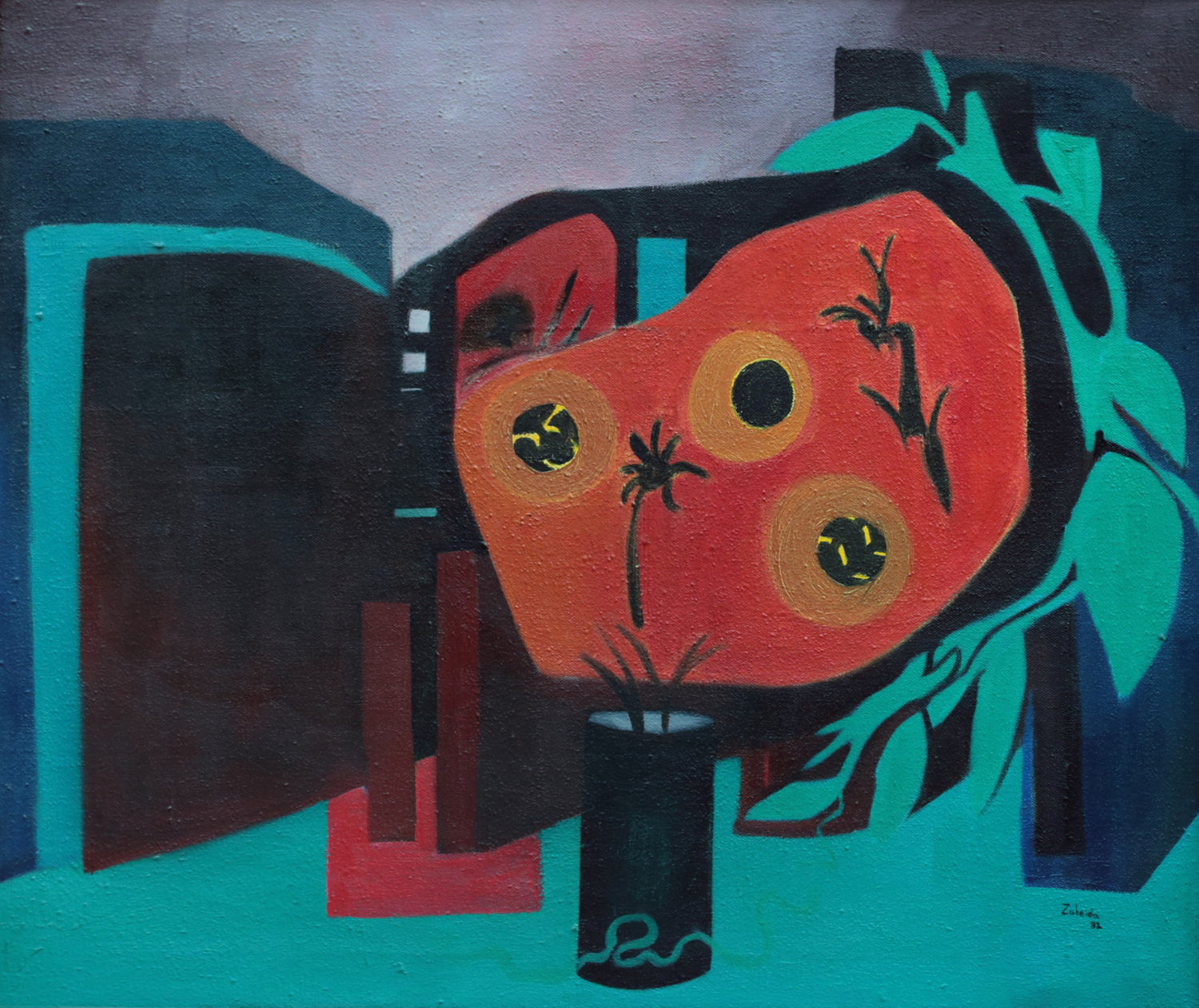Born in modern-day Pakistan, painter Zubeida Agha initially studied Philosophy and Political Science at an all-women’s college. However, after experiencing a recurring dream about the art of painting, she sought out artistic training and began the journey that would become her legacy. Regarded as one of the first modern Pakistani artists, Zubeida Agha changed the definition of art in Pakistan with her use of color and shape.
Agha knew right away that she disliked traditional styles of art. Fortunately, just as she was becoming bored of the art that she was being taught, Mario Perlingieri entered her life. A former pupil of Picasso, the prisoner-of-war encouraged Agha to paint her own inspirations and stray from objective reality in her work. Eventually, Agha went on to display her work at a 1946 exhibition at the Lahore Museum and then in her solo exhibition in 1949, the latter nearly causing a riot because of how modern and striking her art was.
After this explosive exhibition, Agha developed her view of art by embarking on a three-year trip to Europe, where she learned new techniques at the École des Beaux-Arts in Paris and Saint Martin’s in London. She was intrigued to learn that while the European aspects of her art were criticized in her home country, they were the very aspects that were applauded in Europe. After this experience, Agha continued to expand her artistic horizons and diversify art in Pakistan.
She became known as a feminist icon, but ironically Agha hated the term. She did draw inspiration from her gender identity, telling one reporter in an interview that “the sensitive delicacy of her color may owe something to her gender.” Still, Agha is regarded as a pioneer for women and Pakistani people in modern art today.

